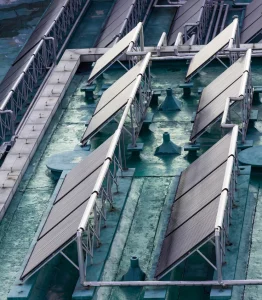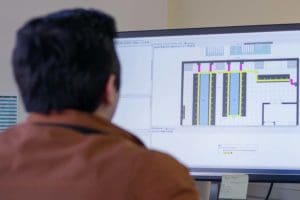Sustainable data centres are the cornerstone of a future where efficiency meets responsibility. At EziBlank, we are dedicated to revolutionising the way you manage air-flow and energy consumption in your data centre. Our innovative blanking panels are designed to optimise airflow management and significantly reduce energy costs, enabling your infrastructure to perform at its peak while minimising environmental impact. Join us in creating a greener, more efficient future – one panel at a time.
Is it Possible to have an Energy Efficient Data Center?
Achieving an energy-efficient data centre is not only possible but increasingly essential in today's digital and environmentally conscious world. Through a combination of advanced technologies and strategic design choices, data centres can significantly reduce their energy consumption while maintaining high performance. Key strategies include optimising cooling systems with techniques like airflow management and using renewable energy sources to power operations. Implementing energy-efficient hardware, such as servers with low power consumption, and adopting monitoring tools to track and improve power usage effectiveness (PUE) are also crucial steps. By focusing on these areas, data centres can lower operational costs, reduce their carbon footprint, and contribute to sustainable business practices.
Read More
Designing an Energy-Efficient Data Center
Designing an energy-efficient data centre requires a strategic approach that combines advanced technology with best practices in layout and infrastructure management. The foundation of an energy-efficient design begins with optimising the physical layout, such as implementing hot and cold aisle containment to prevent the mixing of hot and cold air, which significantly reduces the burden on cooling systems. Incorporating energy-efficient hardware, such as servers and storage devices that consume less power, is also crucial. Additionally, leveraging renewable energy sources like solar or wind power can greatly reduce the carbon footprint of the facility. Effective monitoring and management tools are essential for tracking energy use and making real-time adjustments to improve efficiency. By focusing on these elements, a data centre can achieve optimal performance while minimising energy consumption and operational costs.
Read More
Green Data Center Case Study
A green data centre case study highlights how implementing sustainable practices can lead to significant environmental and financial benefits. In one example, a data centre achieved substantial energy savings by integrating renewable energy sources such as solar and wind power into its operations. Additionally, the facility utilised advanced cooling technologies, including free cooling and liquid cooling systems, which drastically reduced the reliance on traditional, energy-intensive air conditioning. The implementation of hot and cold aisle containment systems further optimised airflow, minimising energy waste. Through these initiatives, the data centre not only reduced its carbon footprint but also realised considerable cost savings, demonstrating that sustainability and efficiency can go hand in hand. This case study serves as a model for other facilities aiming to transition towards greener, more energy-efficient operations.
Read More
